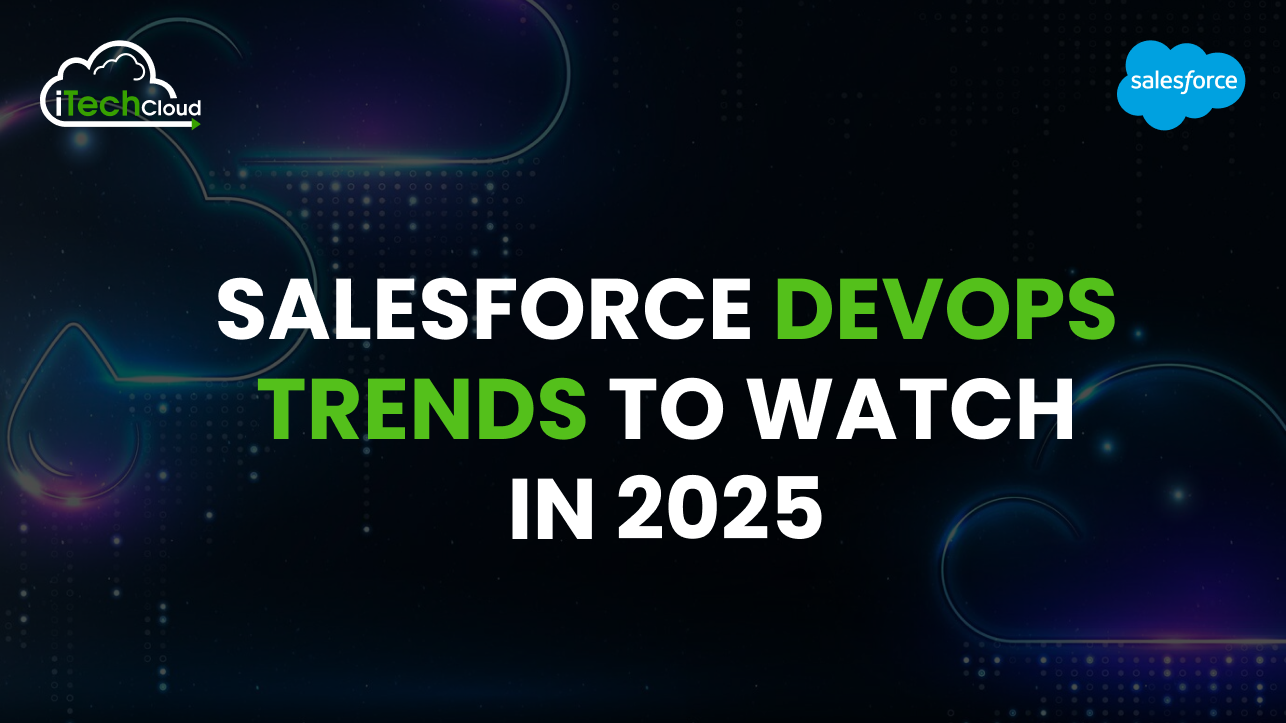Salesforce DevOps continues to evolve at a rapid pace, integrating new tools, methodologies, and best practices. Organizations leveraging Salesforce must stay updated with these trends to maintain efficiency, security, and scalability. Below, we explore the key Salesforce DevOps trends shaping the landscape in 2025.
1. Increased Adoption of AI-Powered Automation
Artificial Intelligence (AI) and Machine Learning (ML) are becoming integral to Salesforce DevOps. AI-driven automation is streamlining development pipelines, enhancing code quality, and reducing deployment errors. Key areas where AI is making an impact include:
- Automated Code Reviews: AI-powered tools analyze code for best practices, security vulnerabilities, and efficiency improvements.
- Intelligent Test Automation: ML-driven testing frameworks optimize test coverage and reduce the time needed for regression testing.
- Predictive Analytics for DevOps: AI helps teams identify potential bottlenecks and deployment failures before they occur.
2. Shift-Left Security with DevSecOps
Security is a critical concern, and in 2025, we will see a greater emphasis on DevSecOps—integrating security early in the development lifecycle. The shift-left approach ensures that security is baked into the development process rather than being an afterthought. Key aspects include:
- Automated Security Scanning: Tools that identify vulnerabilities in real time.
- Compliance as Code: Ensuring Salesforce environments meet regulatory standards through automated compliance checks.
- Identity and Access Management Enhancements: More robust security protocols to safeguard sensitive Salesforce data.
3. Low-Code and No-Code DevOps Expansion
Salesforce is known for its low-code and no-code capabilities, and this trend will extend into DevOps practices. More tools will emerge that allow admins and business users to participate in DevOps processes without deep technical knowledge. This includes:
- Low-Code Deployment Pipelines: Drag-and-drop interfaces for managing deployments.
- Automated Change Management: Simplified version control and rollback mechanisms for non-developers.
- Enhanced CI/CD for Low-Code Development: Streamlined integration between development, testing, and deployment for low-code applications.
4. Git-Based Version Control Becomes Standard
While version control in Salesforce has traditionally been a challenge, Git-based solutions are now widely adopted. In 2025, we will see:
- Deeper Integration with GitHub, GitLab, and Bitbucket: More Salesforce-native integrations with Git providers.
- Improved Branching Strategies: Feature branching, trunk-based development, and release management tailored for Salesforce.
- Automated Merge Conflict Resolution: AI-driven solutions that detect and resolve conflicts before they impact deployments.
5. Enhanced CI/CD Pipelines for Faster Releases
Continuous Integration and Continuous Deployment (CI/CD) have been growing in Salesforce DevOps, but in 2025, expect more:
- Self-Healing Pipelines: Intelligent systems that detect and fix failures in deployment pipelines.
- Zero-Downtime Deployments: Techniques such as feature toggles and blue-green deployments becoming standard.
- Better Test Data Management: Synthetic data and sandbox seeding tools improving test reliability.
6. Unified DevOps Toolchains
The fragmented DevOps ecosystem in Salesforce is evolving toward unified toolchains that offer end-to-end automation. Key trends include:
- All-in-One DevOps Platforms: Solutions that combine version control, CI/CD, testing, and monitoring in one platform.
- Deeper Integration with Salesforce DX: More tools leveraging Salesforce DX for seamless DevOps workflows.
- Cloud-Native DevOps Solutions: Increased adoption of SaaS-based DevOps platforms that are scalable and easy to integrate.
7. Growth of Multi-Cloud and Hybrid Deployments
Many enterprises are now running Salesforce alongside AWS, Azure, and Google Cloud. In 2025, we expect:
- Cross-Platform CI/CD Pipelines: Unified DevOps strategies supporting Salesforce and other cloud environments.
- Containerization in DevOps: Using Docker and Kubernetes for Salesforce DevOps in hybrid setups.
- API-Driven Deployments: Greater reliance on API-first strategies for seamless integrations.
8. Automated Rollbacks and Disaster Recovery
Minimizing downtime is crucial, and automated rollback mechanisms are becoming standard in Salesforce DevOps. Trends to watch include:
- Automated Backups and Restore Points: Snapshots before deployments ensure quick recovery.
- Intelligent Rollback Triggers: AI-driven rollback strategies based on error detection.
- Disaster Recovery as Code: Predefined disaster recovery workflows automated for minimal business impact.
9. Performance Monitoring and Observability
Salesforce applications are becoming more complex, necessitating better monitoring and observability tools. Expect:
- Advanced APM (Application Performance Monitoring): Real-time insights into performance bottlenecks.
- Distributed Tracing for Salesforce Workflows: End-to-end tracking of user interactions and API calls.
- Log Analytics and Anomaly Detection: AI-driven insights into logs for proactive issue resolution.
10. Compliance and Governance Automation
Regulatory requirements continue to tighten, making compliance automation essential. Trends include:
- Automated Compliance Audits: AI-driven tools checking for adherence to GDPR, HIPAA, and other standards.
- Policy as Code: Governance rules defined and enforced through code.
- Enhanced Data Masking and Encryption: More robust methods to protect sensitive Salesforce data.
Conclusion
The Salesforce DevOps landscape in 2025 is set to be more intelligent, automated, and security-focused. Organizations that adopt AI-powered automation, shift-left security, unified toolchains, and enhanced CI/CD strategies will stay ahead of the curve. By embracing these trends, Salesforce teams can achieve faster deployments, greater efficiency, and improved reliability in their DevOps workflows.


